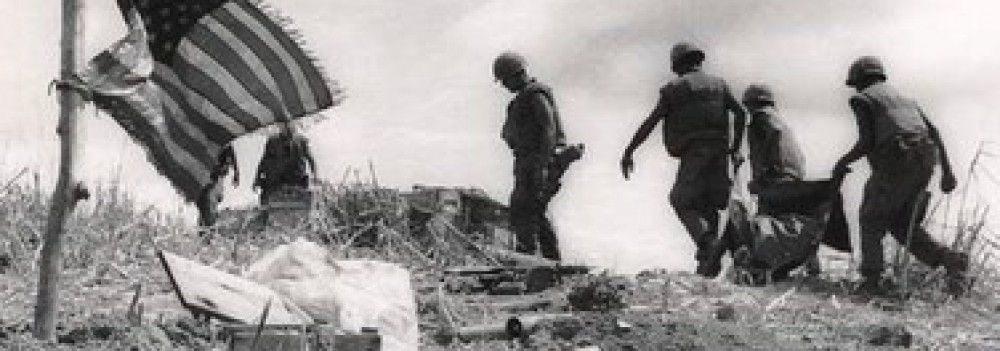Medical/Dental Affairs
- The daily average number of patients seen at the Battalion Aid Station was 18.4. Of these, 53 were admitted to the ward for further treatment and/or observation. Eighty-two were referred to Company ‘B’, 3rd Medical Battalion; twenty-seven of these being admitted for further treatment. Dental referrals numbered 49.
- Prevalent and significant diseases encountered, with the rate of incidence, are as follows:
- Bronchitis – 5
- Diarrhea, acute – 32
- Gastroenteritis, acute – 16
- Gonorrhea – 4*
* Contacted while on R&R
- Emergency situation encountered and the treatment rendered is as follows:
- SGT, C.W. PHILLIPS, 1293125, USMC, H&S Company reported to BAS at approximately 1955 on 26 January 1966 with the diagnosis of wound, missile, gunshot, right upper arm. The humerus was fractured, the brachial artery was severed, and the ulna nerve was contused. Intravenous feeding was commenced, and Procaine Penicillin and Tetanus Toxoid administered. The arm was splinted, and the patient transferred to B-Med for further treatment.
- Medical resupply is becoming exceedingly difficult, especially in certain critical items such as parenteral penicillin, cough syrups, Darvon, and anti-diarrhea medications. Refilling the mount-out block is hampered by nonavailability of SLIT documents. Blankets used on the ward are rapidly becoming soiled due to the increased census thin month. These should be cleaned but no facilities are available.
- The total number of inoculations administered during the month was 128. Serums most commonly used were Typhoid, Plague and Gamma Globulin.
- During the month, MEDCAP treated approximately 3,735 civilians in the following villages: An Hai; Trung Toan; Sam Lin; Hoa Tong; Hoe Trung, and Tan Tong. The most common diseases encountered were dermatological disorders and dental extractions. Sanitation conditions in all villages are primitive but some progress is continuing to be made. The total number of patients seen decreased due to observance of TET (Lunar New Year).
